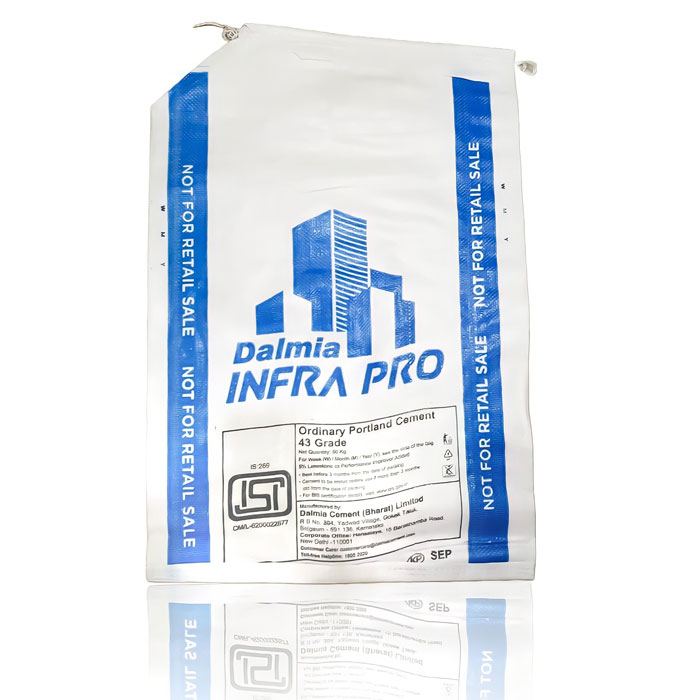Introduction
In the construction industry, packaging is as important as the quality of cement itself. Poor packaging can lead to moisture absorption, spillage, and loss of product quality, affecting both manufacturers and end-users. This is where valve type cement bags have emerged as a revolutionary solution. Designed to improve efficiency, safety, and storage, these bags are now a preferred choice for cement manufacturers, distributors, and contractors.
Valve type cement bags offer durable, leak-proof, and easy-to-fill packaging, ensuring that cement remains dry and secure during transportation and storage. This blog explores everything about valve type cement bags—their features, advantages, applications, and why they are transforming the cement packaging industry.
What are Valve Type Cement Bags?
Valve type cement bags are a type of multi-layer bag specially designed for bulk cement packaging. Unlike traditional open-mouth bags, these bags have a built-in filling valve that allows automatic or semi-automatic filling without spillage. After filling, the valve self-seals under pressure, eliminating the need for additional stitching or sealing.
Typically, valve type cement bags are made from woven polypropylene (PP) fabric, laminated with polyethylene (PE) liners for moisture resistance. They are robust, durable, and capable of carrying 50 kg or more of cement safely.
Key Features of Valve Type Cement Bags
- Valve Filling Mechanism – Enables automatic or semi-automatic filling for faster operations and reduced labor costs.
- Moisture Resistance – Multi-layer design prevents water ingress, maintaining cement quality.
- High Strength & Durability – Withstands rough handling, stacking, and long-distance transportation.
- Self-Sealing Valve – Reduces spillage and ensures a leak-proof seal without stitching.
- Customizable Printing – Allows manufacturers to print brand logos, instructions, and safety information.
- Eco-Friendly Options – Recyclable materials reduce environmental impact.
Advantages of Valve Type Cement Bags
1. Improved Efficiency
The valve filling system speeds up the packaging process, allowing more bags to be filled in less time compared to traditional open-mouth bags. This reduces operational costs and increases production efficiency.
2. Reduced Spillage and Waste
With the self-sealing valve, the cement remains contained, minimizing product loss and mess during filling and transportation.
3. Enhanced Cement Quality
Moisture-resistant liners and durable outer layers ensure that cement retains its strength and workability until it reaches the end user.
4. Easy Handling and Storage
The bags are designed for stacking and safe transportation, reducing labor effort and ensuring space efficiency in warehouses and delivery trucks.
5. Brand Visibility and Information
With high-quality printing, manufacturers can display brand logos, batch numbers, and handling instructions, enhancing both marketing and compliance.
6. Eco-Friendly Packaging
Most valve type cement bags are made from recyclable PP woven fabric, helping companies adopt sustainable packaging solutions.
Applications of Valve Type Cement Bags
1. Cement Manufacturers
Used for packaging bulk cement, valve type bags ensure that cement is ready for automatic filling lines, improving production efficiency.
2. Construction Companies
Contractors and construction sites benefit from easy-to-handle, leak-proof bags, reducing labor costs and material wastage.
3. Distributors and Retailers
These bags facilitate safe transport and storage, ensuring cement reaches retailers and wholesalers without quality loss.
4. Export Cement Packaging
For international shipping, valve type bags protect cement from moisture and damage, making them ideal for long-distance transport.
How Valve Type Cement Bags Work
- Filling – Cement is poured into the bag through the valve opening using an automated or semi-automated filling machine.
- Self-Sealing – The valve closes automatically under the weight of cement, forming a tight, leak-proof seal.
- Transportation & Storage – Bags are stacked safely and transported without risk of spillage or moisture damage.
- Usage – At the construction site, the cement can be easily emptied by cutting or opening the valve.
This system reduces labor costs, spillage, and contamination, ensuring smooth operations from the factory to the construction site.
Comparison with Traditional Cement Bags
| Feature | Traditional Open-Mouth Bags | Valve Type Cement Bags |
|---|---|---|
| Filling | Manual or semi-automatic | Automatic/semi-automatic |
| Spillage | High risk | Minimal |
| Moisture Protection | Moderate | High, with laminated layers |
| Labor Requirement | High | Low |
| Efficiency | Low | High |
| Branding | Limited | High-quality printing possible |
Valve type cement bags clearly outperform traditional bags in efficiency, safety, and product protection.
Conclusion
Valve type cement bags are transforming the cement packaging industry with their durability, moisture resistance, and efficiency. They reduce spillage, protect cement quality, and provide an eco-friendly alternative to conventional bags. Ideal for manufacturers, distributors, retailers, and construction companies, these bags offer a modern, reliable, and cost-effective packaging solution.



